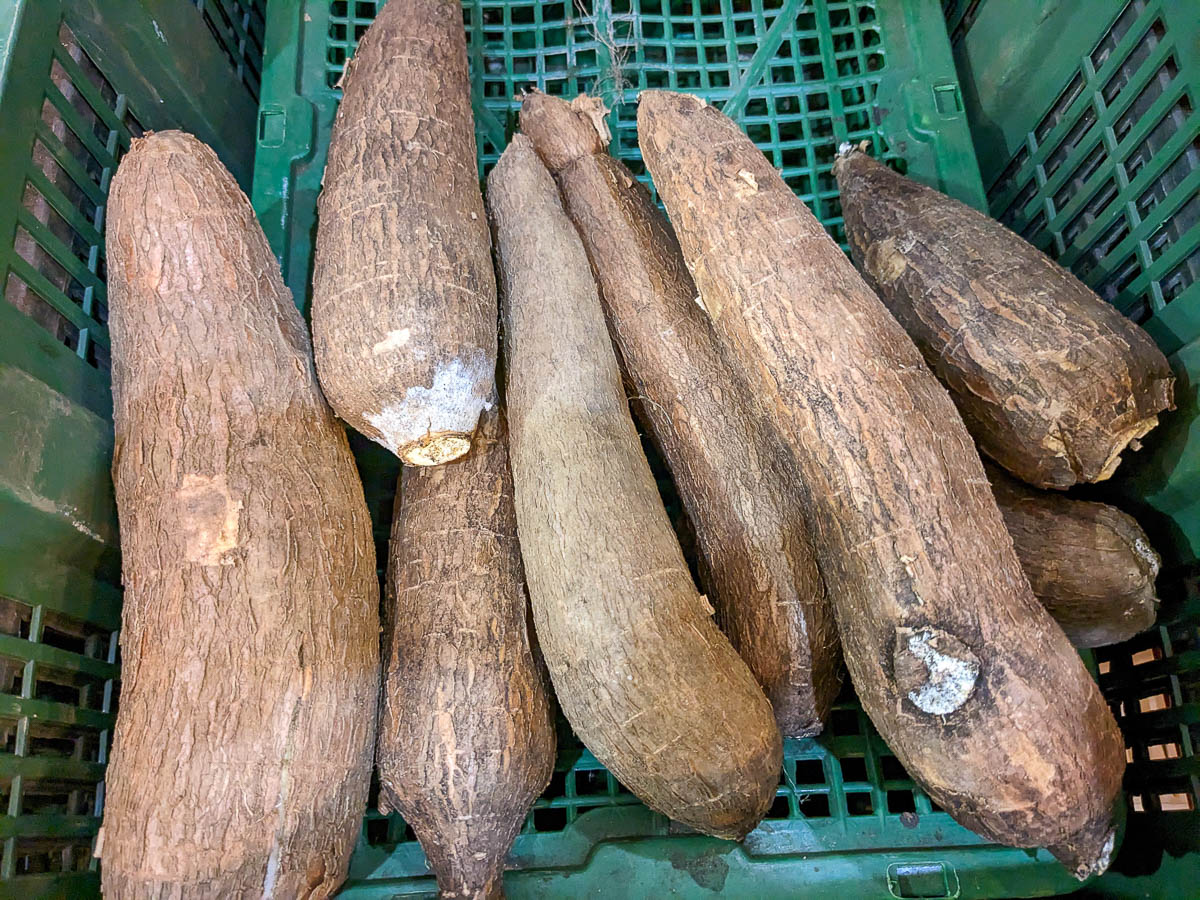Tapioca
Tapioca (Manihot esculenta)
Other common names: Ubi Kayu, Bitter Cassava, Manihot, Manioc, Mandioca, Gari, 木薯
.jpg)
Tapiocas are a common root vegetable that is extensively grown and consumed across Southeast Asia. The tubers are processed into a variety of snacks and desserts and is a key ingredient in bubble tea pearls. The leaves are often steamed and eaten as a vegetable.
A large perennial crop, Tapioca is often found in heritage gardens, rooftop gardens and edible gardens.
Sun and soil needs:
Tapioca is a hardy crop that can grows well in well in 4-6 hours of direct sunlight or at least 6 hours of indirect sunlight.
Plants do best in pots with sandy soil at least 30cm deep, or in true ground. They are also highly tolerant of dry soils and drought-prone environments. To optimise tuber growth, add plenty of inorganic soil amendments to the soil to encourage root and stem growth.
Growing:
Tapioca is a rapid grower and generally does not need fertilizing. Plants can grow up to 4m high with enough sunlight, and is prone to snapping. Prune the plant to around 1.5m for ease of maintenance. Older leaves and side branches should be regularly pruned to force the plant to focus its energy on growing tubers.
Harvesting:

The plant can be harvested for the tuber around a year after planting. Harvesting the tubers after may result in them being very fibrous and hard root that is unpleasant to eat.
Plants can be harvested for leaves at any time, with younger leaves being the most tender. Young leaves can be harvested multiple times via the cut-and-come-again method.
The whole plant can be harvested once by digging up the tubers with a spade.
All plants parts must be thoroughly cooked as the tuber and the leaves contain toxins.
Propagation:
Tapiocas are primarily grown from woody stem cuttings rooted directly into soil or division of the tubers.
Common problems & solutions:
This plant is relatively resistant to pests and disease if kept healthy.
Aphids, Mealy Bugs, Whiteflies, and Spider Mites often infest the plant if it has root rot or is waterlogged. Mechanical pest control methods like pruning the infested parts are the best methods for managing these pests.
This plant is prone to rust during the wet season. Prune the plant regularly to increase airflow, and remove heavily affected leaves.

